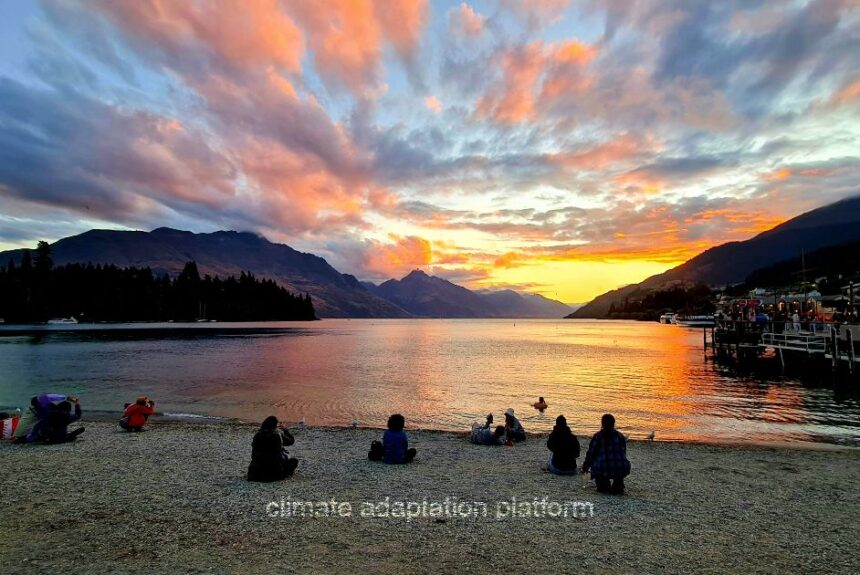Methane is the second-largest contributor to global warming after carbon dioxide, accounting for approximately 30% of current temperature increases.
Although methane remains in the atmosphere for a shorter period—about 12 years compared to carbon dioxide’s potential lifespan of up to a thousand years—it is over 80 times more effective at trapping heat in the atmosphere during the first 20 years after it is released.
A study from New Zealand titled “Radiocarbon monoxide indicates increasing atmospheric oxidizing capacity,” published in Nature in January 2025, reveals that more methane is being released into the atmosphere, which could contribute to increased global warming. At the same time, researchers found that the level of hydroxyl radical (OH)—a compound responsible for removing heat-trapping gases—is also on the rise in the atmosphere.
A study conducted by researchers from several institutions, including New Zealand’s National Institute of Water and Atmospheric Research (NIWA), Victoria University of Wellington, GNS Science, and a collaborator from Finland, has analyzed 33 years of air sample data from New Zealand and Antarctica, dating back to the late 1980s.
The study finds that the hydroxyl radical (OH), a naturally occurring molecule in the atmosphere—referred to by Nobel Prize laureate Paul Crutzen as the “detergent of the atmosphere” due to its capacity to remove 90% of methane emissions, carbon dioxide, and other pollutants—has been strengthening in the Southern Hemisphere since approximately 1997.
This discovery is considered a significant advancement in climate science. It enhances our understanding of the atmosphere’s ability to self-clean.
Researchers used radiocarbon monoxide (14CO), naturally produced by cosmic rays, as a tracer, which OH mostly removes. Their findings show that measurements of 14CO in the Southern Hemisphere point to rising OH levels.
Specifically, data from New Zealand show an annual decrease of 12% (± 2%) in 14CO since 1997, and data from Antarctica show a drop of 43% (±24%) in December-January. These trends suggest that OH levels are increasing, supporting researchers’ models and other models that indicate OH has been strengthening in recent decades.
Hydroxyl radical, the “detergent of the atmosphere”.
Even at low atmospheric concentrations, hydroxide radical (OH) molecules are highly reactive because they have unpaired electrons that tend to transfer to other molecules.
The OH radical is the most important oxidant in the troposphere, the lowest part of the atmosphere, located approximately 10 kilometres from the earth’s surface. OH oxidizes most trace gases, such as CO2, carbon monoxide (CO), and methane (CH4).
By examining the processes and atmospheric compounds driving the increase, the study finds that the factors contributing to the rise in hydroxyl radicals (OH) are methane, nitrogen oxides primarily produced by motor vehicles, ozone depletion, and global warming.
Researchers conclude that their findings are significant for understanding how OH influences pollutant levels, mainly methane, which may increase more than previously believed.
The study’s lead author, climate and atmospheric scientist Olaf Morgenstern, says that although this finding that the OH is increasing in the atmosphere is positive for the climate and the fight to lower GHG emissions and its earth-warming consequences, the study also finds evidence that methane emissions are rising even faster than thought, particularly in the last five years than any time since they started recording in the 1980s.
In other words, according to Morgenstern, had it not been for the strengthening of OH in the atmosphere, the methane’s warming effect would have been worse.
Sources:
Morgenstern, O., Moss, R., Manning, M., Zeng, G., Schaefer, H., Usoskin, I., Turnbull, J., Brailsford, G., Nichol, S., & Bromley, T. (2025). Radiocarbon monoxide indicates increasing atmospheric oxidizing capacity. Nature Communications, 16(1), 1-11. https://doi.org/10.1038/s41467-024-55603-1
Lyons, K. (2025, January 31). Atmosphere’s self-cleansing ability followed by long-term study. Phys.Org. Retrieved from https://phys.org/news/2025-01-atmosphere-cleansing-ability-term.html
Atmospheric Chemistry “Detergent of the atmosphere”. Water& Atmosphere 16(1) 2008. Retrieved from https://niwa.co.nz/sites/default/files/import/attachments/detergent.pdf
Gibson, E. (2025, February 7). Global heating targets challenged by increased methane, wetlands responsible – study. Retrieved from https://www.rnz.co.nz/news/national/541152/global-heating-targets-challenged-by-increased-methane-wetlands-responsible-study



Leave a Reply